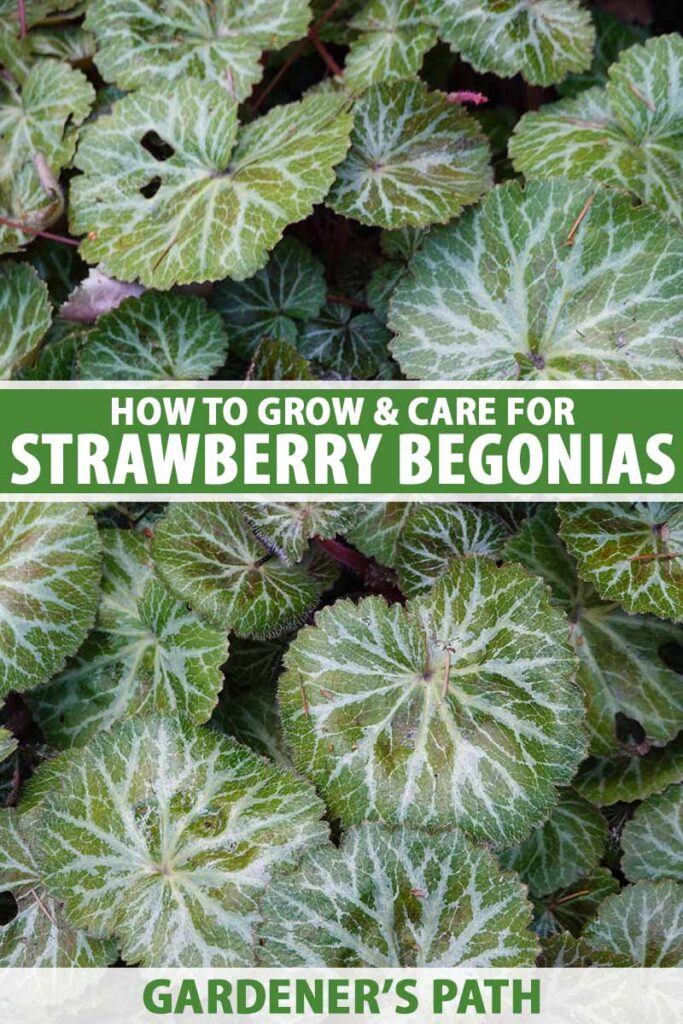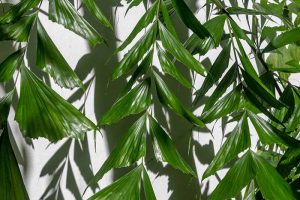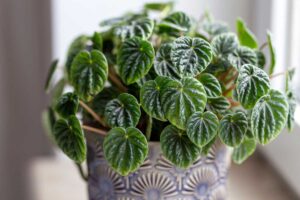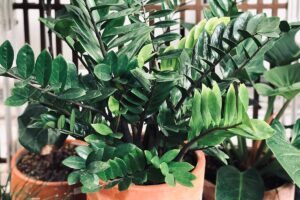Saxifraga stolonifera
Boy, howdy – the strawberry begonia is one gorgeous houseplant!
I mean, slapping the word “strawberry” in front of something practically guarantees greatness. (See: Smoothie King’s “Strawberry X-Treme,” 5 Gum’s “Strawberry Flood,” and Deana Carter’s “Strawberry Wine.”)
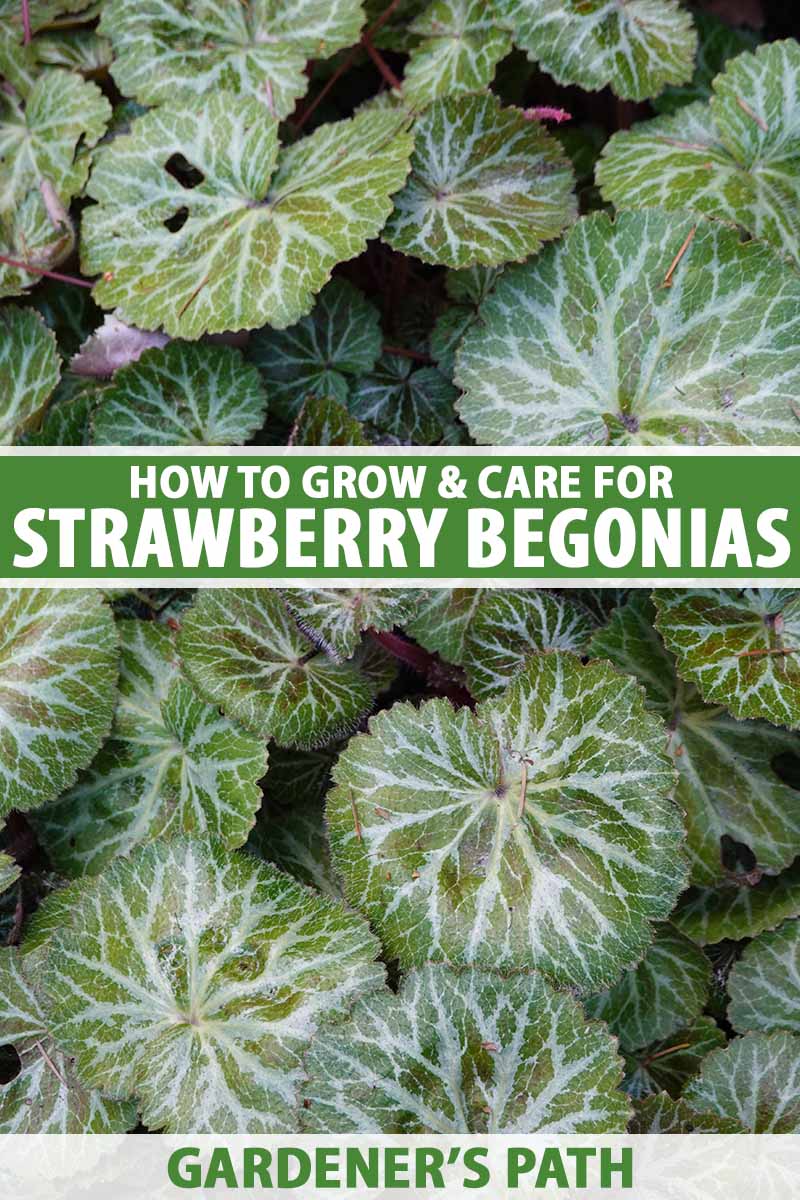
We link to vendors to help you find relevant products. If you buy from one of our links, we may earn a commission.
But even setting its descriptive common name aside, Saxifraga stolonifera earns its splendor.
Beautiful rosettes of leaves, stunning slender flowers, and cute little plantlets connected via graceful stolons all work together in harmony to create a true ornamental knockout.
But in order to wield this refined plant in your houseplant arsenal, you’ll need to be able to grow it. Therefore, a guide on its cultivation is in order – one strawberry begonia guide, coming right up!
What You’ll Learn
What Are Strawberry Begonias?
Strawberry geranium, creeping saxifrage, strawberry saxifrage… You may have heard of the strawberry begonia already, via one of its many other common names.
But despite its most well-known moniker, this plant is neither strawberry nor begonia.
S. stolonifera is actually a member of the Saxifragaceae, a family of flowering herbaceous perennials that also includes coral bells, astilbe, and jade plants.
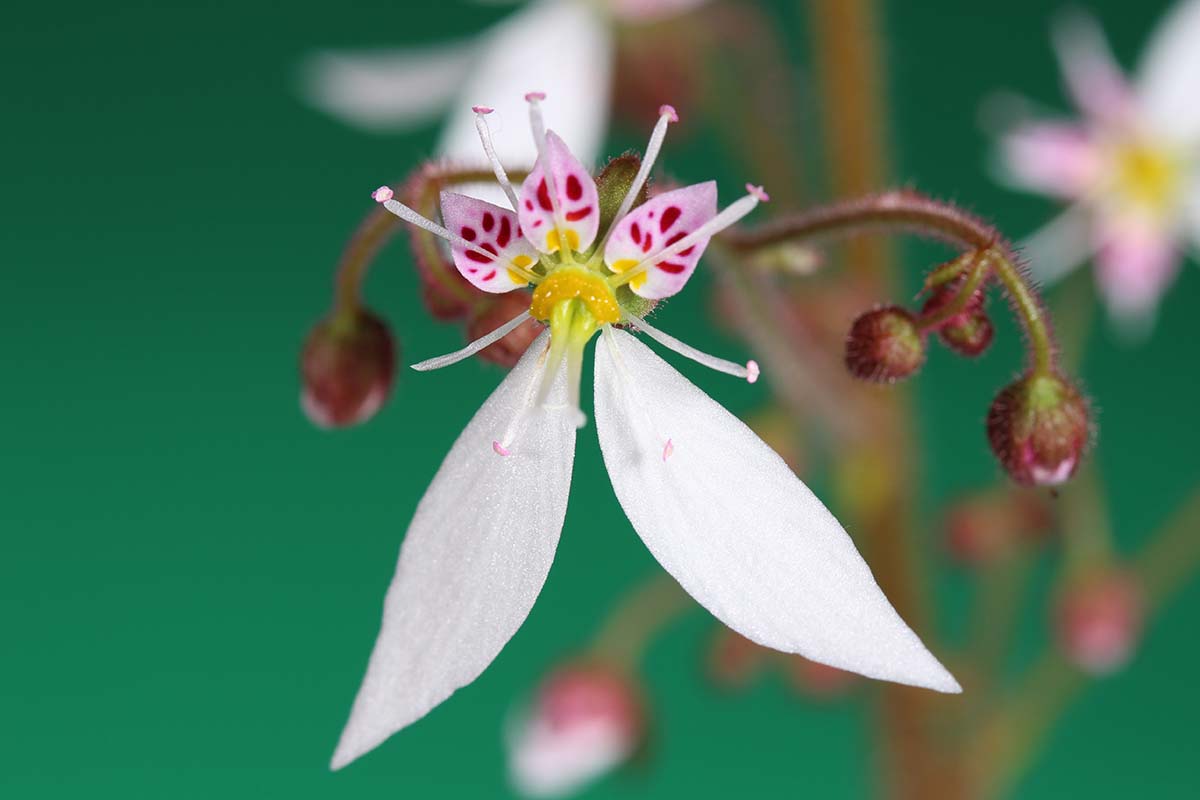
The genus name Saxifraga is a portmanteau of the Latin terms saxum (rock or stone) and frangere (to break), a nod to how Saxifraga species tend to live in rock fissures.
Over time, the roots of these plants can contribute to further rock crumbling and breakage.
The species name stolonifera is also Latin, meaning “to bear stolons” – a reference to the threadlike red stolons or runners that are reminiscent of those of strawberry plants.
Plantlets are produced on the ends of the stolons, which allows this species to colonize an area as a mat-like ground cover.
The plant forms three- to nine-inch-tall rosettes of dark green, rounded, hairy leaves with silver markings and reddish undersides.
In spring, the flower stems can reach heights of up to 18 inches, with each bloom bearing two larger flower petals underneath three smaller, magenta-speckled pink ones.
Cultivation and History
Hardy in USDA Zones 6 to 9, S. stolonifera is native to China, Japan, South Korea, and Taiwan.
Found in environments ranging from lowlands to 4,000-foot elevations, the strawberry begonia was brought back west from China by Dutch traders in the mid-1700s.
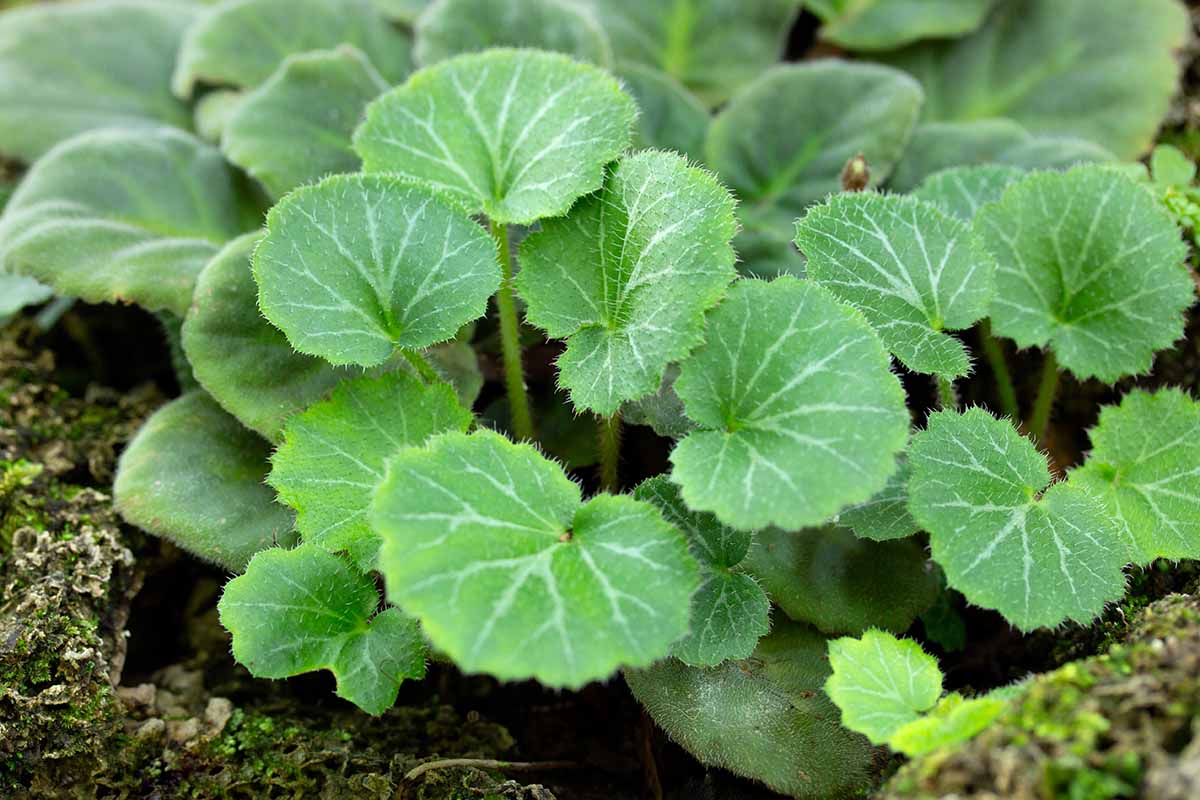
Nicholaas Meerburg, a lead botanist from the Leiden Botanic Garden in Holland, was the first to provide a name and illustration for this plant, both of which were published in his 1775 work, “Illustrations of Rare Plants.”
By 1993, S. stolonifera had become popular enough in western gardens to earn the prestigious Award of Garden Merit from the UK’s Royal Horticultural Society.
Today, strawberry begonias are still beloved by green thumbs, whether grown indoors or outside.
Propagation of Strawberry Begonia Plants
Alone time, the news, and Double Stuf Oreos should all be consumed or enjoyed in moderation.
Strawberry begonias, on the other hand, can be enjoyed without restraint, as much as your horticultural heart desires.
Acquiring more S. stolonifera is best done by propagating plantlets.
From Plantlets
The daughter plantlets of a strawberry begonia are pretty much mini versions of the mother plant, clones connected via a slender stolon that fuels the plantlet.
These plantlets are quite capable of growing as their own independent units. But in an indoor setting, it’s up to us gardeners to emancipate them.
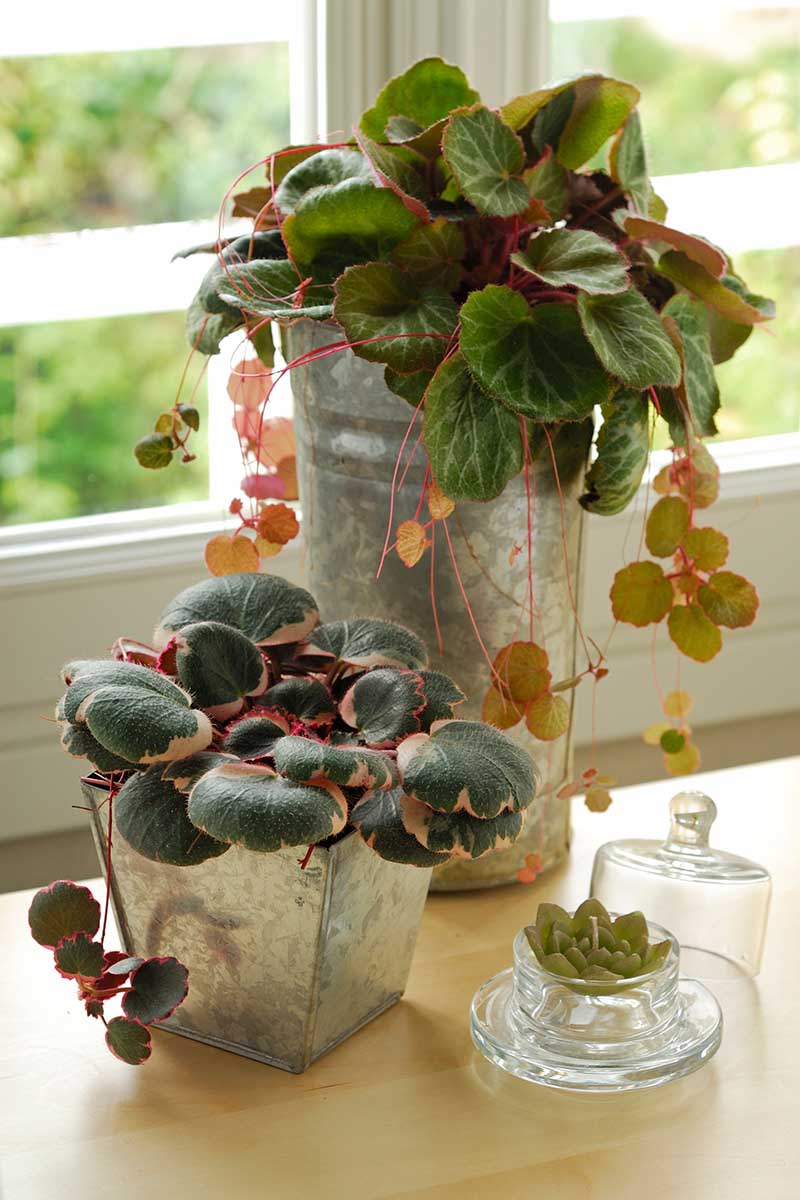
With a sterilized blade, cut away plantlets once they grow at least five mature leaves, making sure to leave an inch of stolon stem sticking out from the base.
From here, you can propagate the plantlet either in water or in growing media, depending on whether or not the plantlet has developed aerial roots.
No aerial roots? Then you’ll need to submerge the stem in water, while keeping the foliage above the water’s surface. This process will eventually lead to root formation on the submerged stem!
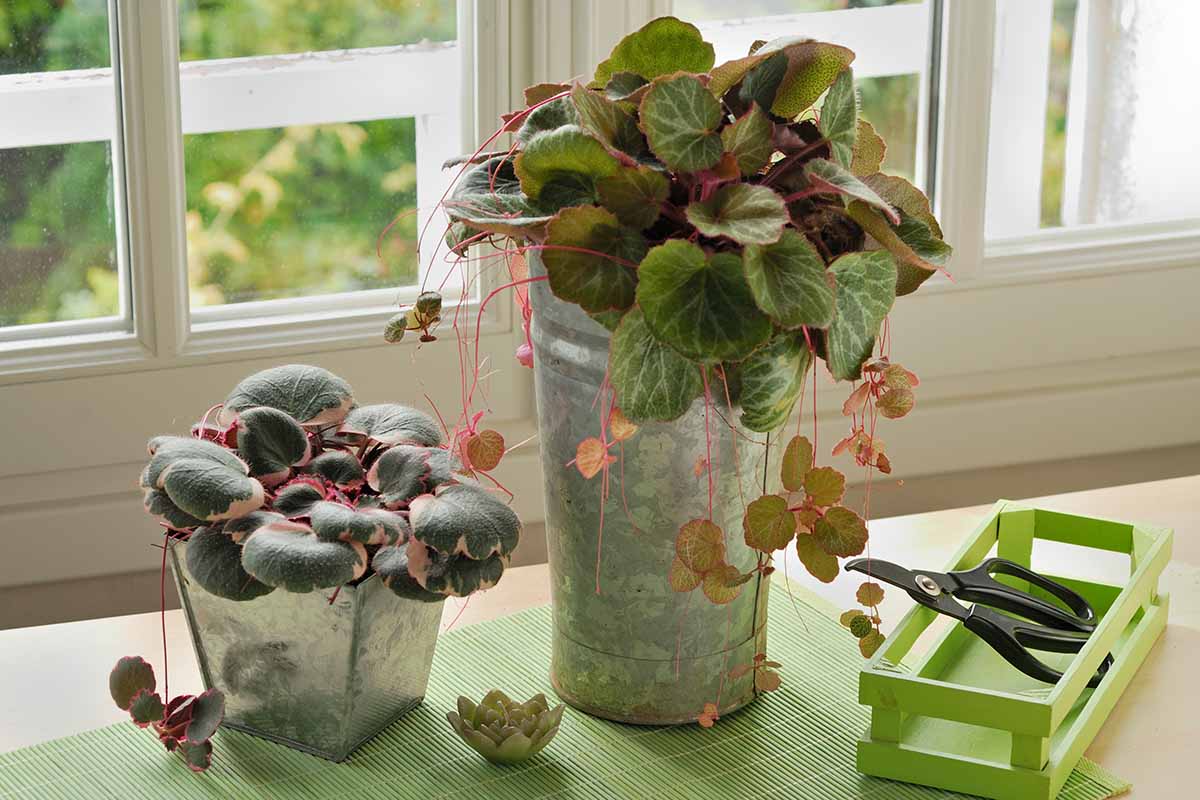
Ideally, the water you use should be filtered, distilled, or collected rainwater placed in a tall, skinny drinking glass or your choice of translucent glassware and allowed to come to room temperature.
These test tube-esque containers will simultaneously keep the roots wet and the foliage dry, while also allowing you to observe root formation.
A line of these vials can have your home looking like a science lab… but it doesn’t have to.

3-Tier Mkono Plant Propagation Tubes
An aesthetic way of displaying these tubes on your wall is with this three-tiered wooden plant terrarium – with 15 included tubes! – that’s available from Amazon.
Place in a location indoors that receives bright, indirect light and be sure to change out the water every three days or so.
In a few weeks, you should have plantlets with two inches of root growth.
At this point, you’ll need to move each into its own four-inch container filled with a 50:50 mix of sphagnum peat moss and perlite.
Any plantlets with aerial roots that have already developed prior to their removal from the mother plant should go directly into their own pots, as described above.

Now, you simply treat them like you would a mature S. stolonifera – provide indirect light and a moist growing medium throughout their growth and development.
How to Grow Strawberry Begonias
“But how do I cultivate fully grown strawberry begonias?”
I’m glad you asked…
Thankfully, the care requirements for S. stolonifera are pretty simple.
Climate and Exposure Needs
Ideal temperatures are 50 to 70°F – a range that your home will most likely be able to sustain.
Providing supplemental humidity isn’t a requirement, but it’ll sure help in keeping the soil moist and reducing plant desiccation.
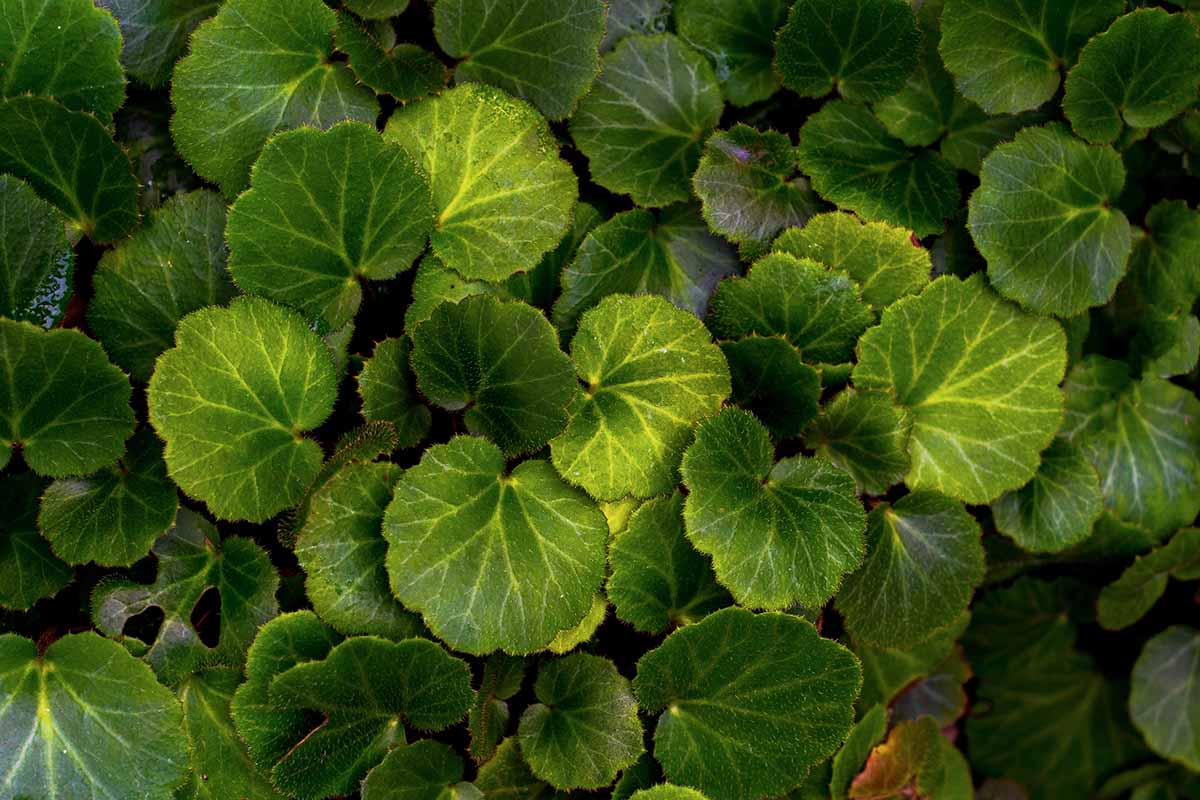
A tray of small stones partially submerged in water is an inexpensive and effective way of increasing the ambient humidity. Just place it beneath your plant’s pot.
Grouping houseplants close together works, too.
Exposure-wise, ensure that your strawberry begonia receives the brightest indirect light possible. But it must be indirect – direct light could cause sunscorch, desiccation, or even plant death.
Growing Media Needs
A pH of 6.0 to 7.0 is optimal for the potting mix and a 50:50 mix of sphagnum peat moss and perlite will serve your strawberry begonias well.
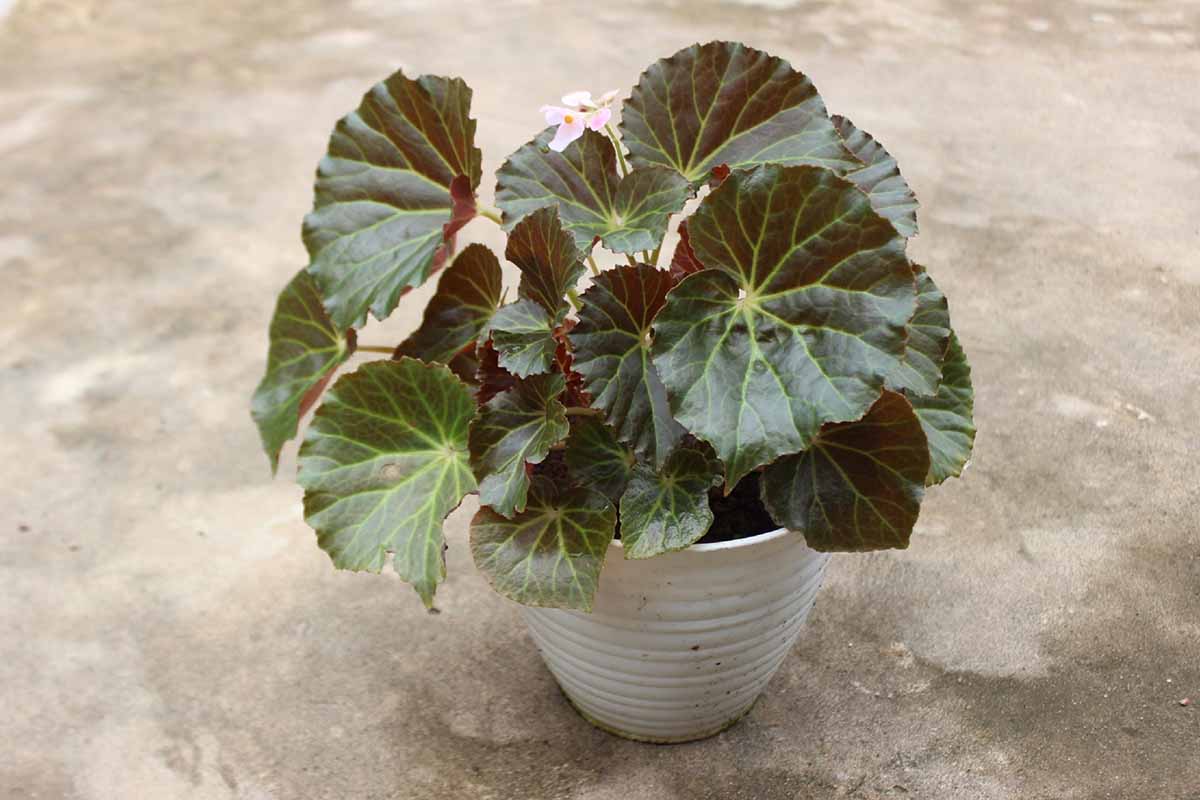
The moss helps to retain moisture while the perlite improves aeration and allows excess water to drain. Don’t forget to use a container with drainage holes!
Water and Fertilizer Needs
For strawberry begonias, it’s important to maintain soil moisture. Water whenever the top inch of soil feels dry.
During the growing season, add a complete houseplant fertilizer with every fourth bout of watering. During autumn and winter, make that every sixth time you irrigate.

A splendid product for the job is this eight-ounce bottle of liquid 4-3-4 NPK fertilizer from Easy Peasy Plants, which is available on Amazon.
Growing Tips
- Bright, indirect light exposure is critical.
- Make sure to provide excellent drainage.
- Irrigate whenever the top inch of soil feels dry to the touch.
Maintenance
Other than snipping off any undesirable flower stems and repotting in spring every three to four years, there’s not much that this plant needs, maintenance-wise.
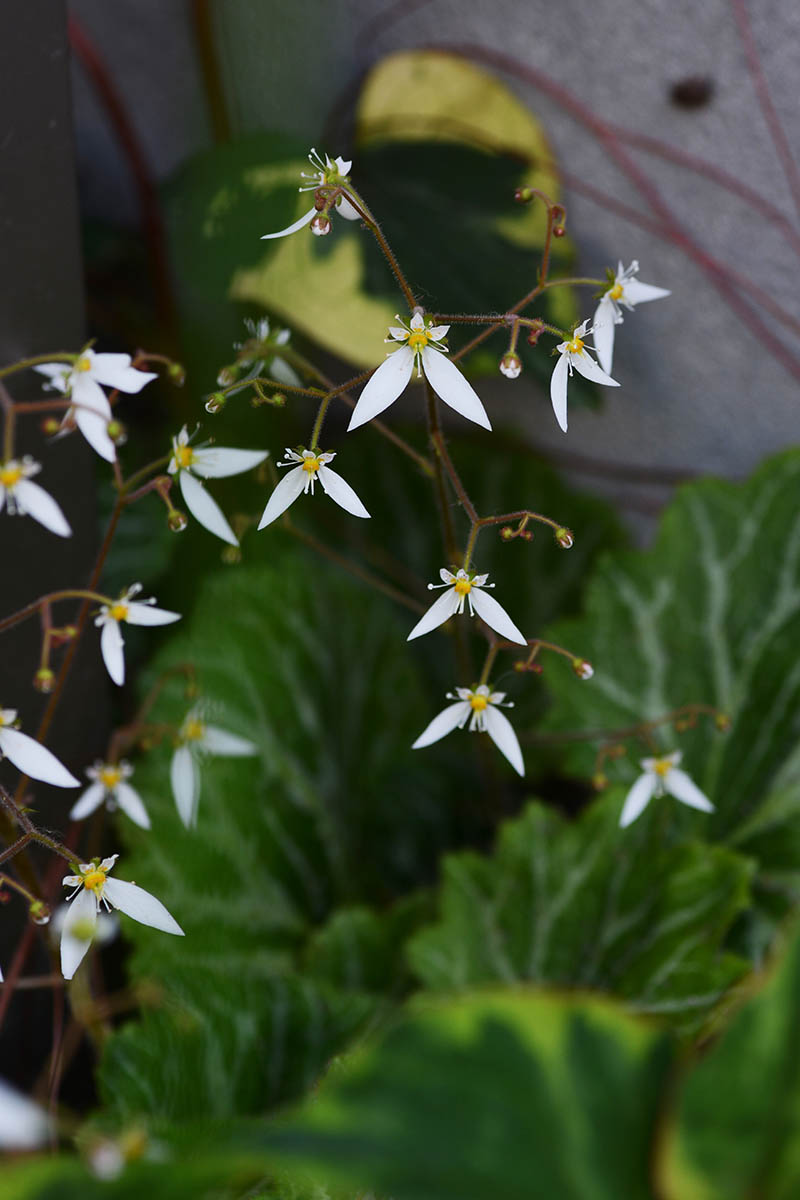
For repotting, choose a pot with a diameter a couple inches greater than that of the original container.
In the new pot, add an inch or two of growing media to the bottom – an even mix of peat moss and perlite is perfect.
Tease the plant out from the original container, undo any tangles from the sides and bottom of the root system, and place it in its new container.
Fill in the sides with additional growing media, gently pat it all down, and water it in.
In winter, water a bit less often – perhaps by allowing an additional inch or two of dryness before watering – but never let the soil dry out.
Strawberry Begonia Cultivars to Select
There’s no doubt – a standard strawberry begonia is quite stunning.
Anyone who buys this three-inch S. stolonifera specimen from the Winter Greenhouse Store on Amazon will undoubtedly see this for themselves!

But if you’re looking for a slightly different flavor of ornamental awesomeness, then read on to learn about a couple of gorgeous strawberry begonia cultivars.
Maroon Beauty
You know those coloring books that kids and stressed-out adults love to use?
‘Maroon Beauty’ looks like someone took a strawberry begonia and scribbled in between the silver markings on the upper leaves with a maroon Crayola.
This isn’t entirely an exaggeration – the color doesn’t quite fill in all the way to the silver edges, providing an interestingly chaotic appearance.
These maroon blotches look a bit like port wine stains, which adds complementary color to the already-present greens and silvers.
Additionally, reddish hairs are apparent on the leaf surfaces – yet another cool feature to look at.
Variegata
For another variety with a slightly different color scheme, ‘Variegata’ looks similar to the standard species, save for its white to pink leaf margins.

The exact size of the colorful margins fluctuates in width as it moves around the border of each leaf, with the thickest sections at the basal ends of the foliage.
If you’re worried about monochromatic hues, the color can differ from one leaf to the next, too.
Some sport purely white borders, others flaunt hot pink margins, and the rest are a mix between the two. It definitely keeps you on your toes, providing endless visual interest!
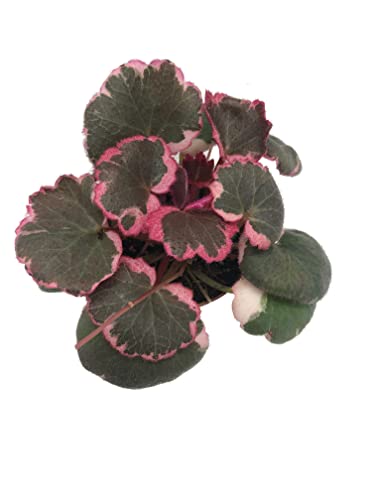
For a ‘Variegata’ plant in a two-inch pot, head on over to Amazon.
Managing Pests and Disease
Besides having a more easily controlled environment than you might in an outdoor garden, the great indoors also tends to feature fewer pests and diseases.
But infestation and infection can still occur inside the home, so it’s worth knowing how to combat the most notorious S. stolonifera health issues.
Pests
In addition to the problems that they cause, pests can also vector pathogens. Therefore, cracking down on infestation could also save your plants from infections down the road.
Make sure you check your plants for pests before bringing them into your home.
Any infested specimens should immediately be quarantined away from your other houseplants until the issue is resolved.
Aphids
Soft-bodied, yet green and mean, these pests grow to between a sixteenth and an eighth of an inch long at maturity.
Via their sucking mouthparts, they extract the sap from plant tissues, which can lead to wilting and overall stunted growth.
Aphids also excrete honeydew while they feed, which can result in the black fungal powder known as sooty mold.
With strong sprays of water, you can blast any aphids off of leaf surfaces. Insecticidal soaps or neem oil can be applied to the foliage as a way of killing these pests outright.
Additionally, dipping cotton swabs in isopropyl alcohol and rubbing them on infested plant surfaces in an effective form of spot treatment.

Bonide ready-to-use insecticidal soap is available on Amazon.
And you can find organic neem oil from Bonide available from Arbico Organics.
Learn more about how to manage aphids in our guide.
Mealybugs
Coated with a mealy-looking wax, these segmented, wingless, and white- to gray-colored insects are 1/20 to a fifth of an inch long at maturity.
On strawberry begonias, they tend to congregate on leaf undersides, particularly along the midribs.
Much like aphids, they can suck enough sap from leaf tissues to cause wilting and stunted growth. They also excrete honeydew, which can lead to the black sooty mold mentioned earlier.
Mealybugs are similar to aphids in both the symptoms that they cause and how you control them – the techniques used for aphids will also work just fine on these pests.
Find additional mealybug control tips here.
Slugs
These soft-bodied and shelless mollusks tend to infest houseplants if they’re set near open windows without screens or placed outside for short periods.
Symptoms show up as circular bite marks on foliage, which can result in leaf yellowing and browning.
A slug’s trademark slime trail is another indicator of their presence, which can show up on the plant or nearby surfaces.
First things first, you should definitely pick off any slugs that you happen to see. Once that’s done, take the plant outside and gently wash it down from all angles.
After the plant dries, add a thin layer of diatomaceous earth to the surface of the potting medium.
Additionally, you might wish to apply a dusting or a diluted DE spray made with one tablespoon of DE per two cups of water to the tops and undersides of the leaves.
These treatments will severely desiccate and kill any slugs foolish enough to attack your specimens.
Be sure to work outdoors or in a ventilated area and wear proper protection when applying DE.
Learn more about slugging it out with slugs in our guide.
Spider Mites
Full disclosure: spider mites aren’t technically insects. They’re actually arachnids, along with ticks and actual spiders.
Of the spider mites that infest houseplants, the two-spotted spider mite is the most common.
At 1/50 of an inch in length, these round, eight-legged critters have two prominent dark spots on their bodies, hence the name.
Spots of chlorosis or speckles of feeding damage can show up on infested foliage, along with webbing.
Along with gentle sprays of water, applications of insecticidal soap or horticultural oil are effective means of control.
Additionally, since these spider mites prefer dry environments, maintaining ambient humidity around your strawberry begonias and keeping them properly irrigated will help to deter these pests.
Our guide to dealing with spider mites provides more information.
Disease
Not too many disease issues with this plant, thankfully. However, one potentially serious problem is the infamous condition known as…
Root Rot
Caused by either too much moisture on its own or in combination with a soilborne fungus, root rot is no joke.
If the roots essentially drown from excess irrigation or sit in a medium that doesn’t drain properly, they’ll start to decay, causing wilting and chlorosis in the shoots.
Treatment involves removing the plant, washing away the soil from the affected roots, and then snipping said roots away with sterilized scissors.
You may also want to prune away an equivalent amount of leaf mass so the roots and shoots are more in proportion with each other. Plants that are too far gone will have to be pitched.
In terms of prevention, the best thing you can do is water properly and provide a well-draining container and media.
By using fresh and sterile media, you shouldn’t have to worry much about fungal problems.
Best Uses for Strawberry Begonias
S. stolonifera and its mat-like, clumping habit looks fantastic when grouped with more upright houseplants such as snake plants and fiddle-leaf figs, each in their own containers.

Additionally, the plantlets that form on the ends of the graceful red rhizomes trail over containers quite elegantly, making strawberry begonia an ideal specimen for a hanging basket.
Quick Reference Growing Guide
| Plant Type: | Herbaceous evergreen perennial | Flower/Foliage Color: | White/gold to yellow, gray to silver, green, pink, purple to lavender, white |
| Native to: | China, Japan, South Korea, Taiwan | Maintenance: | Low |
| Hardiness (USDA Zones): | 6-9 | Tolerance: | Cool temperatures |
| Bloom Time: | Late spring to early summer | Soil Type: | Moist, fertile |
| Exposure: | Partial to full shade, indirect light | Soil pH: | 6.0-7.0 |
| Planting Depth: | Depth of root system | Soil Drainage: | Well-draining |
| Height: | Up to 18 inches | Uses: | Containers, hanging baskets |
| Spread: | 1-2 feet | Order: | Saxifragales |
| Growth Rate: | Rapid | Family: | Saxifragaceae |
| Water Needs: | Moderate | Genus: | Saxifraga |
| Common Pests and Diseases: | Aphids, mealybugs, slugs, spider mites; root rot | Species: | Stolonifera |
The Strawberry Begonia: A Berry Awesome Plant
Yes, it’s true: S. stolonifera will significantly upgrade your interior design.
Come to think of it, a strawberry begonia is a lot like an actual strawberry. They’re both sweet to look at, they’re both pretty, and if I came across a roadside stand that sells either of these, I’d probably buy more than most would consider financially responsible.
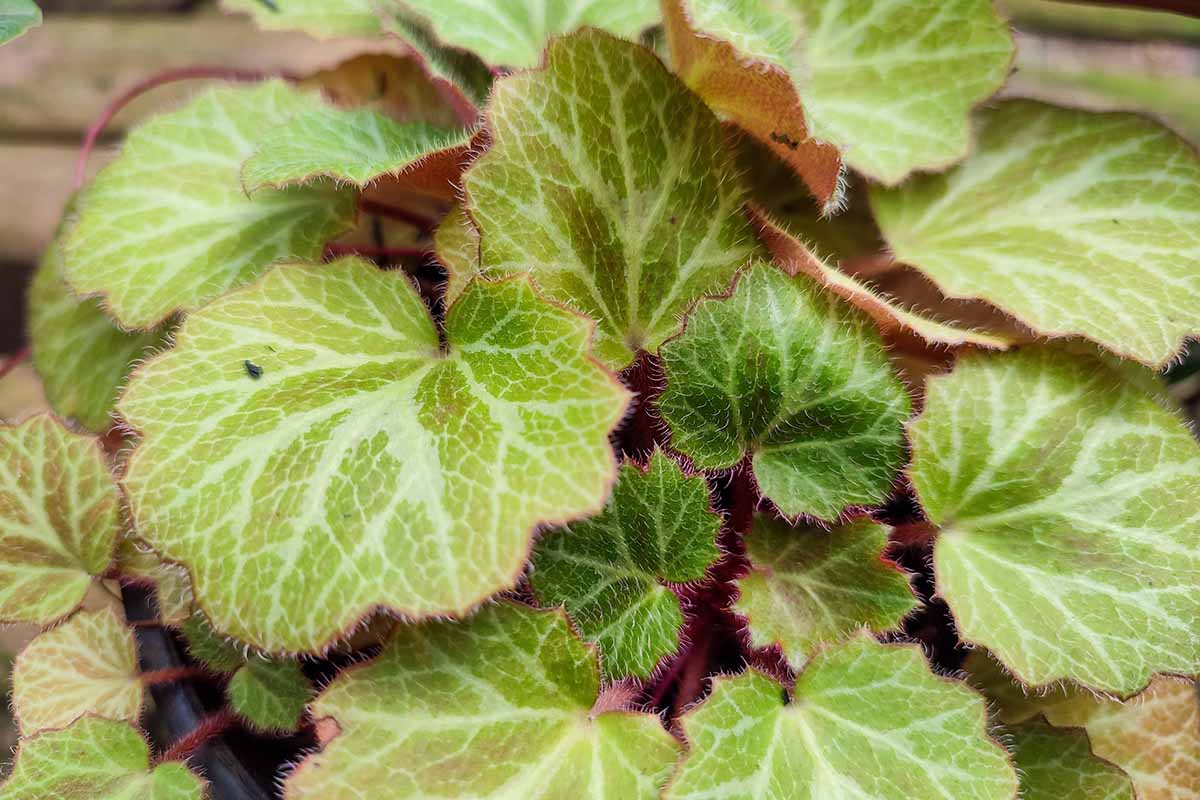
It’s the end of the guide, folks, and a time for celebration: you can now flaunt a S. stolonifera in your home! Once you have a season or two under your belt, cultivating these guys will become a near-effortless routine.
Bursting with questions or remarks? Let it all out in the comments section below!
Interested in other indoor plants that don’t require backbreaking labor to keep alive? Here are some more guides on cultivating low-maintenance houseplants:
